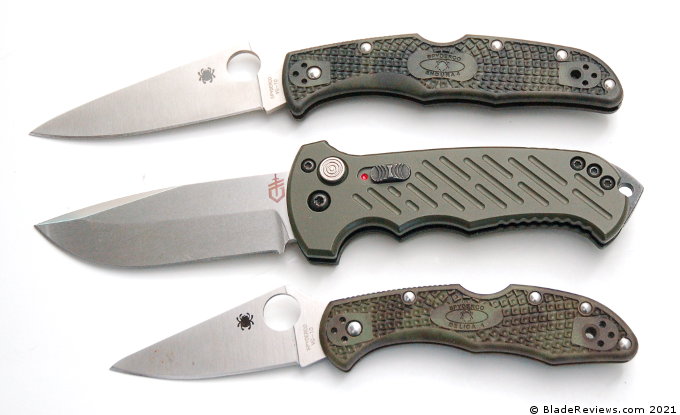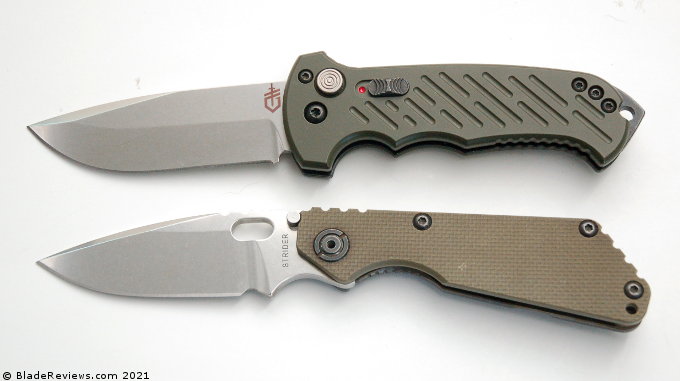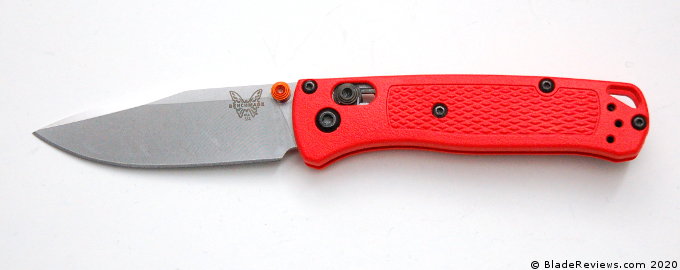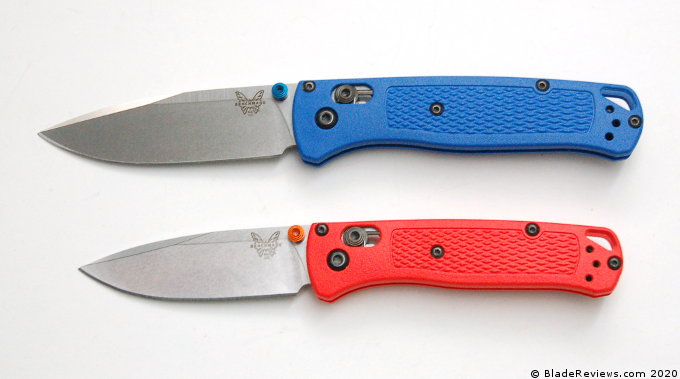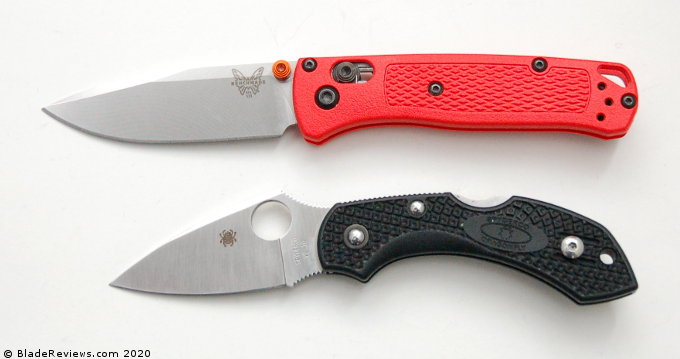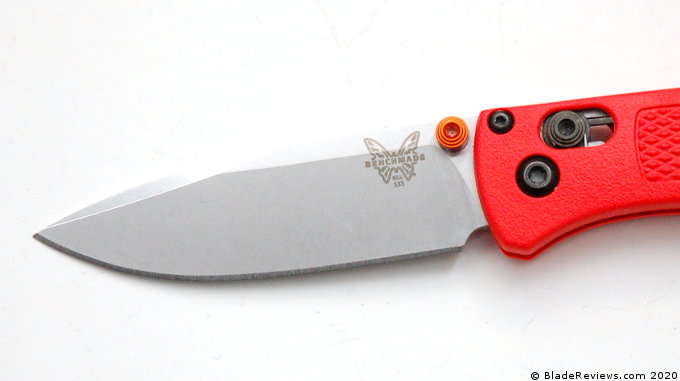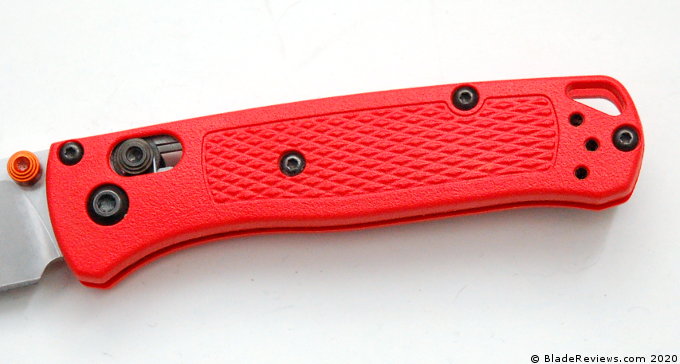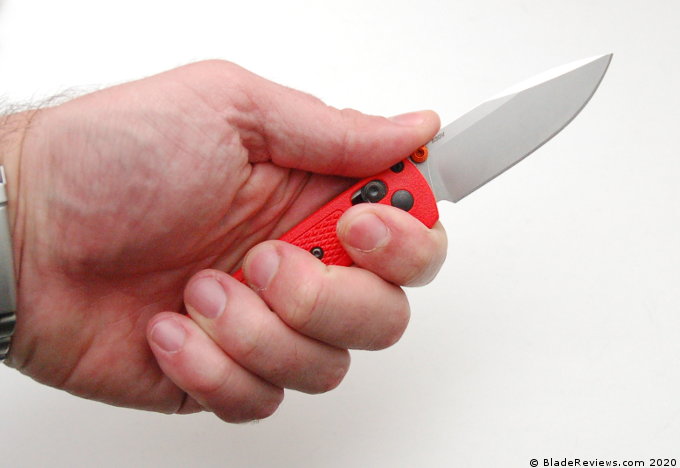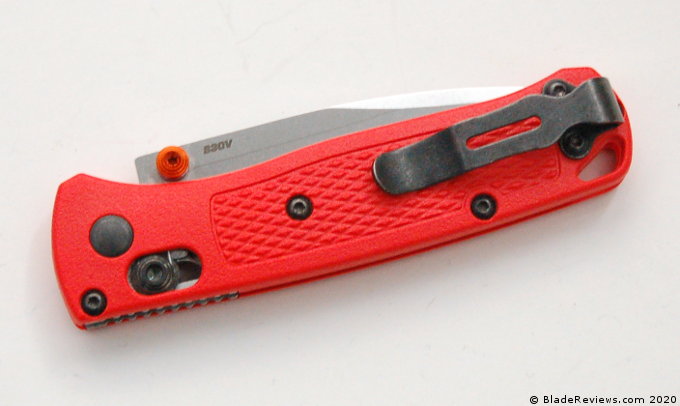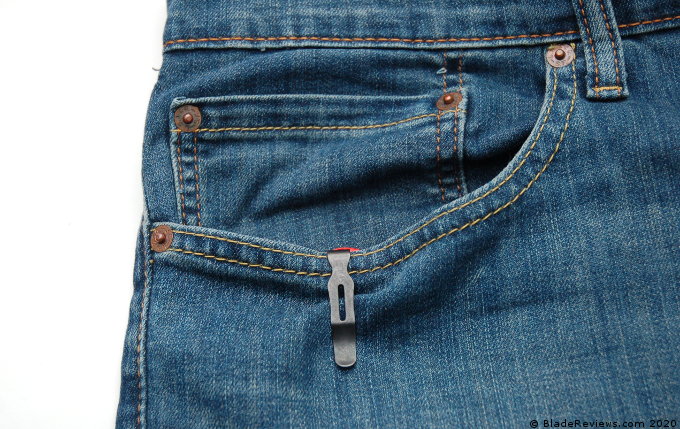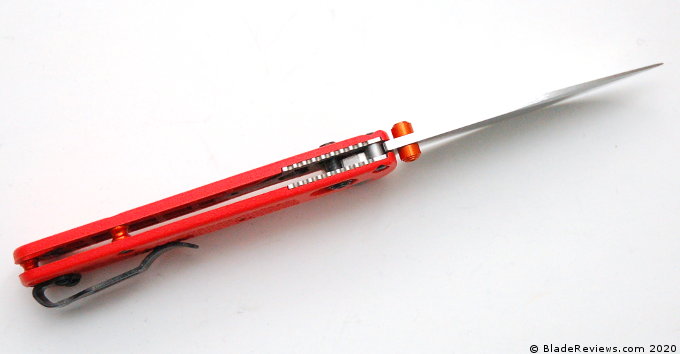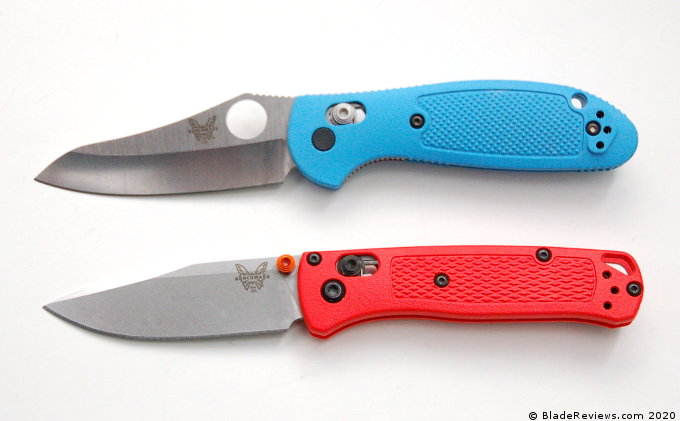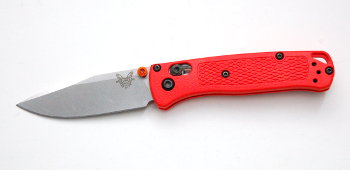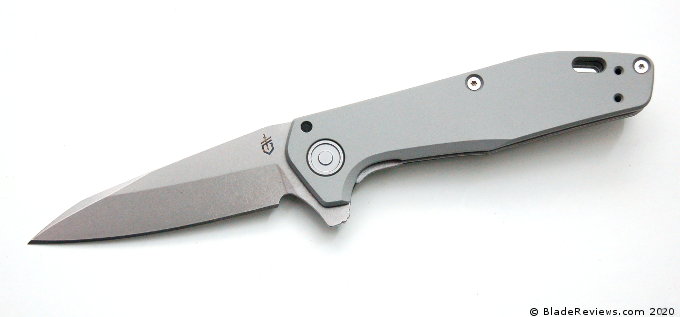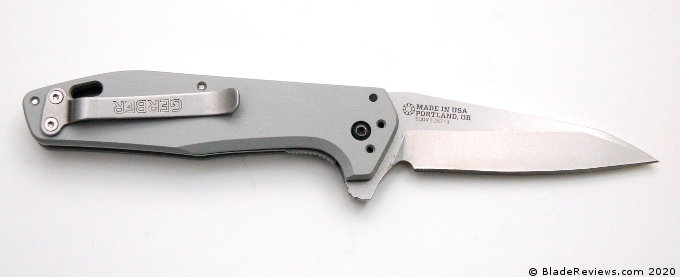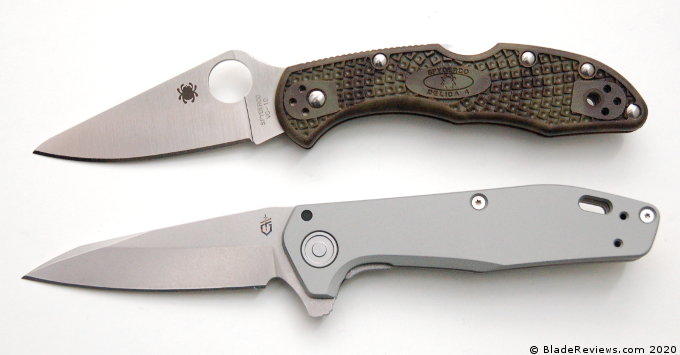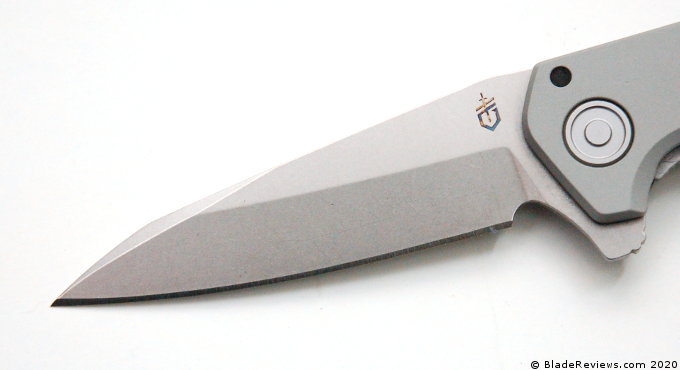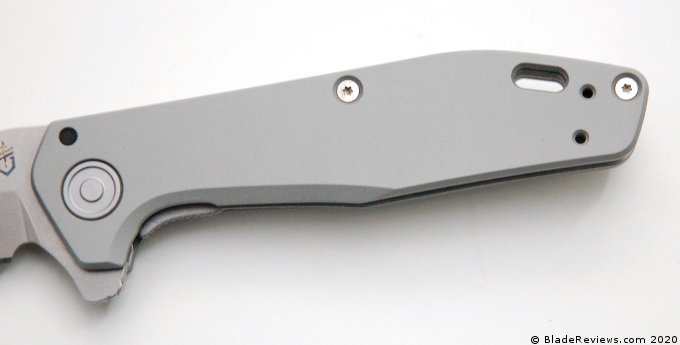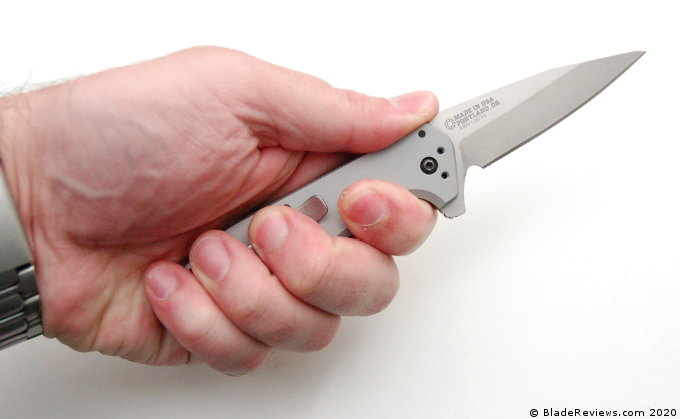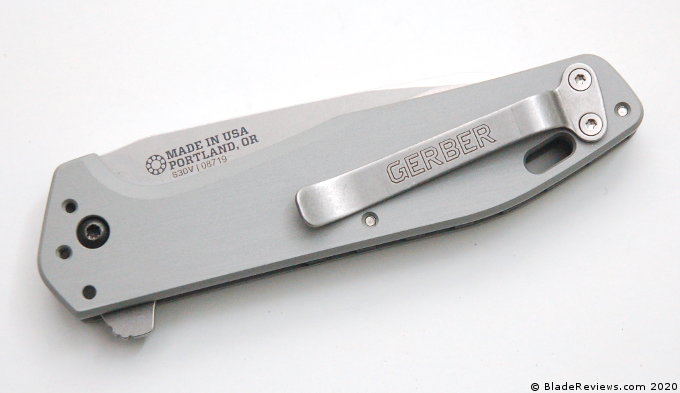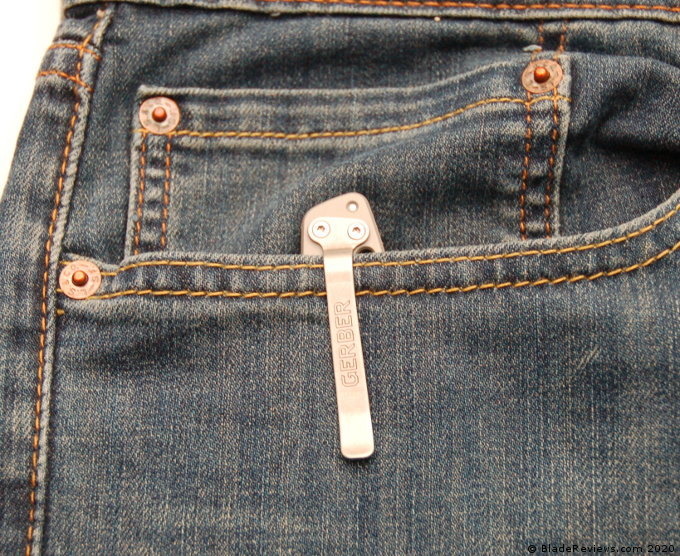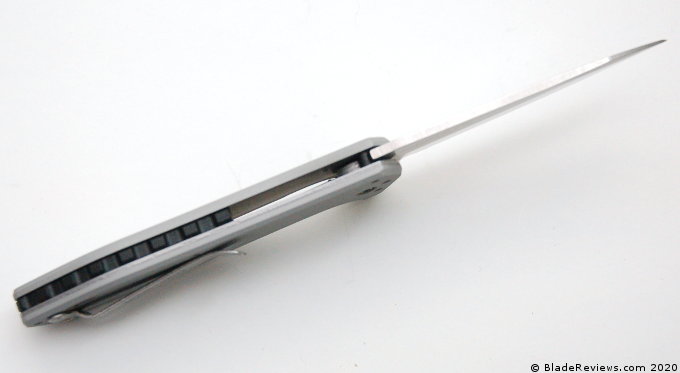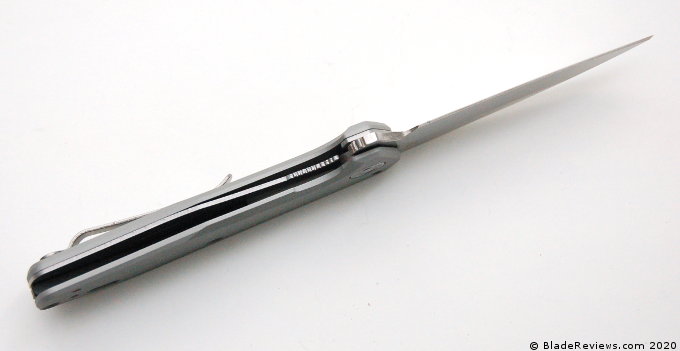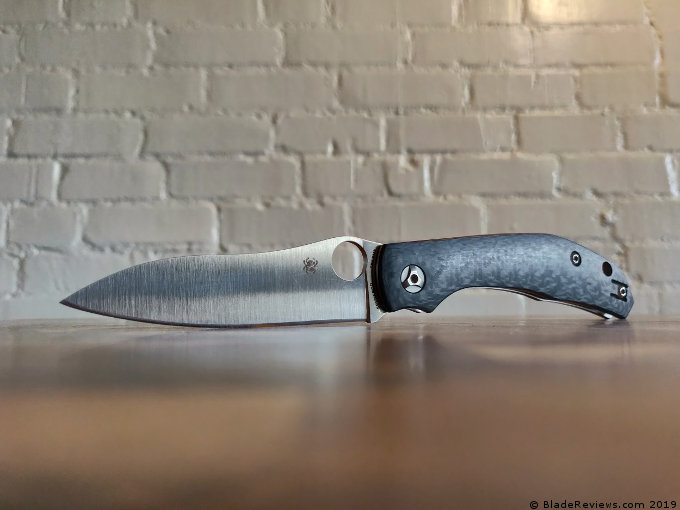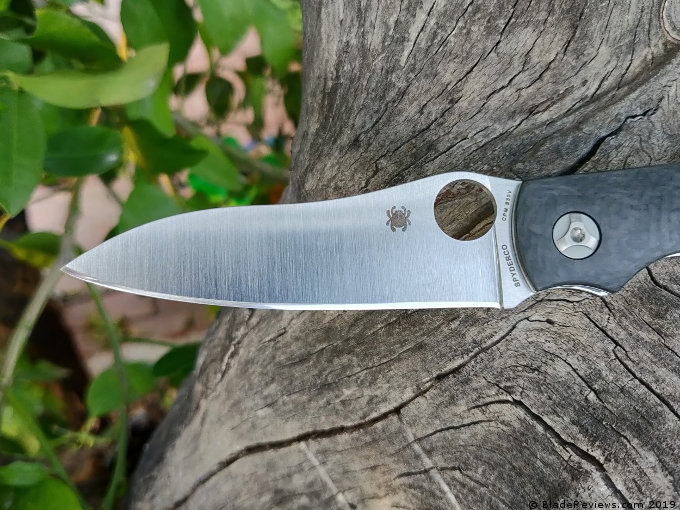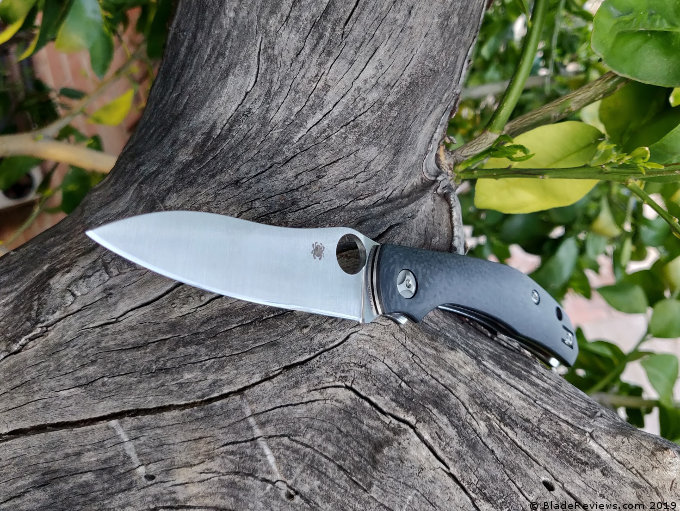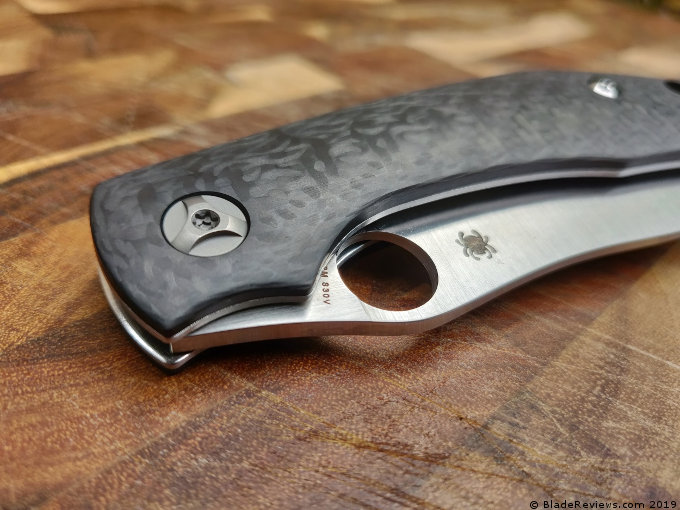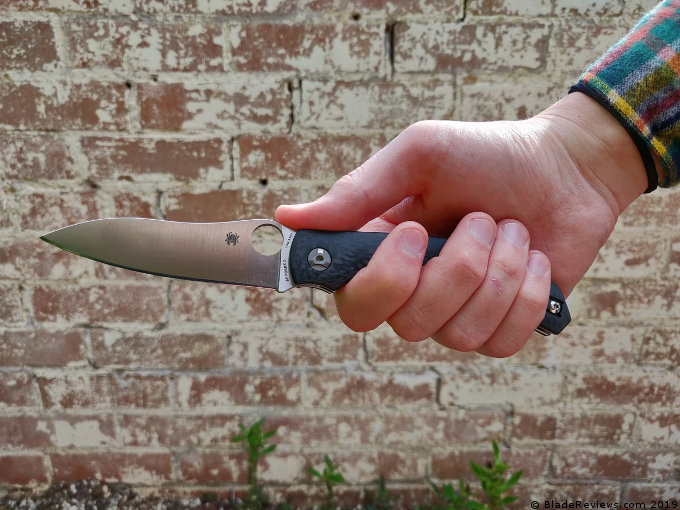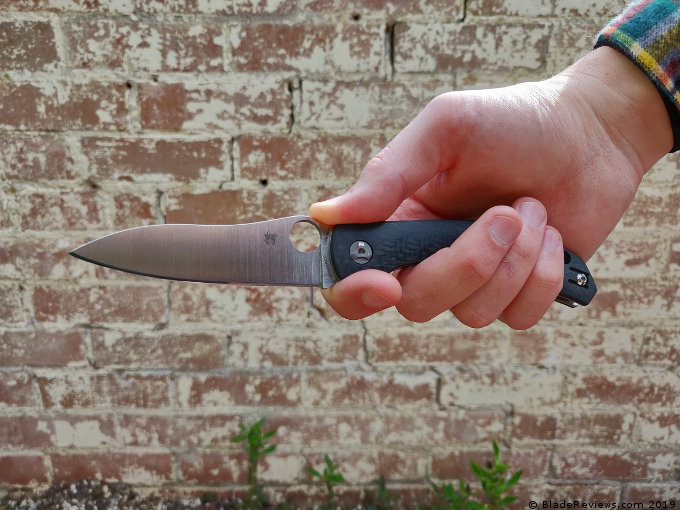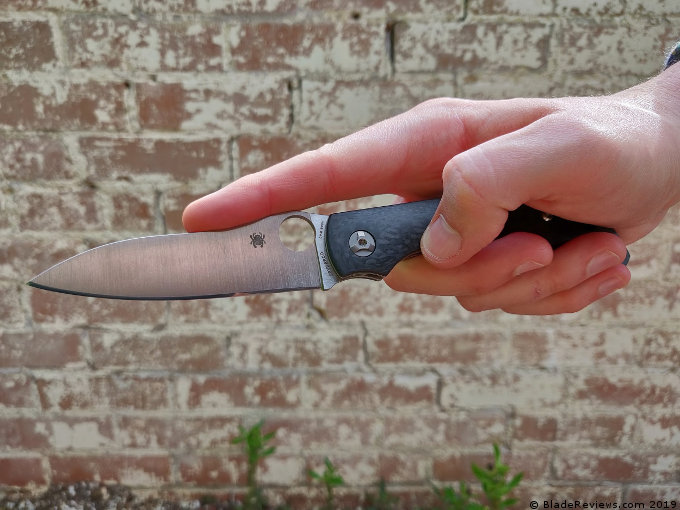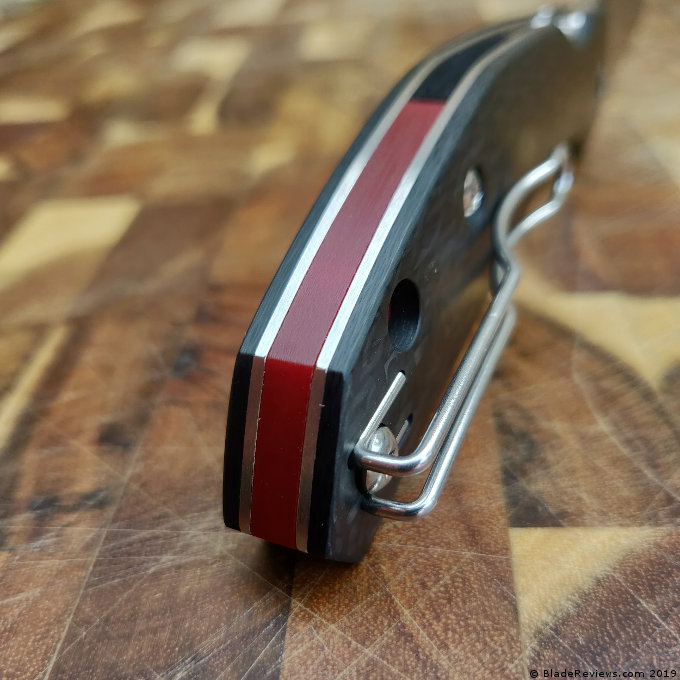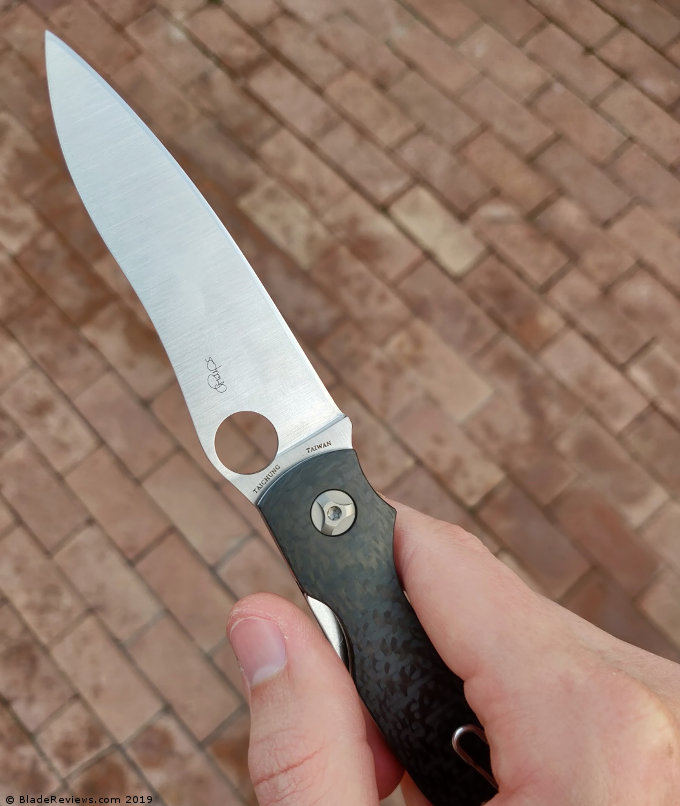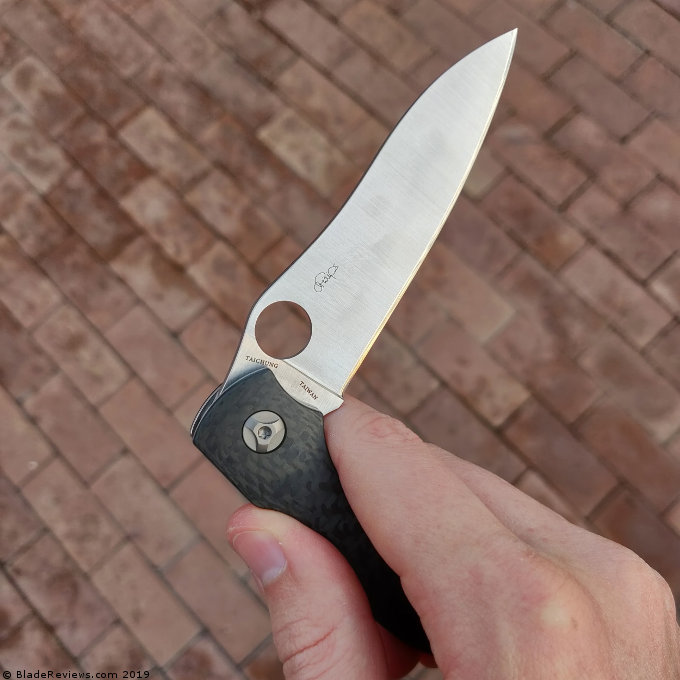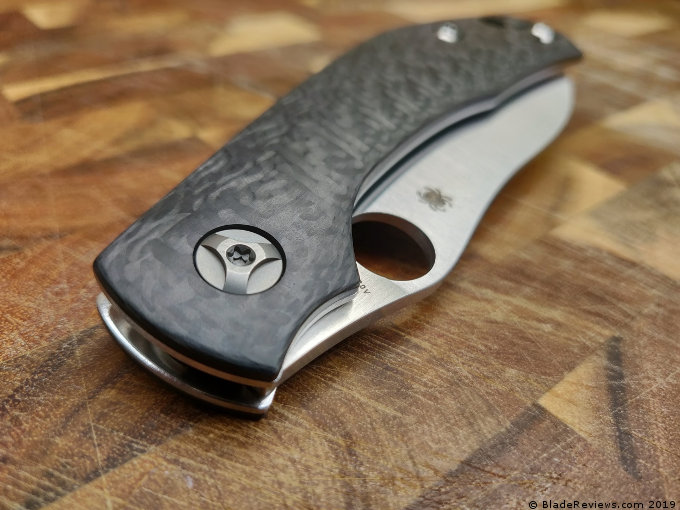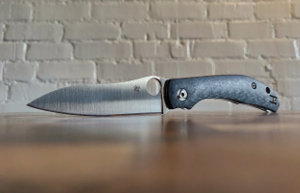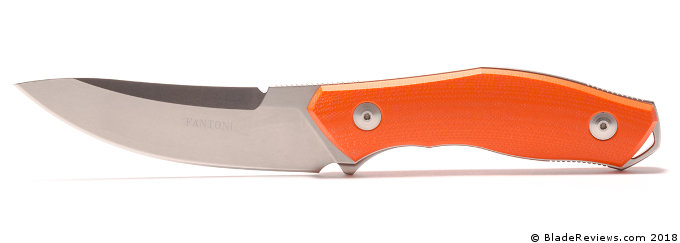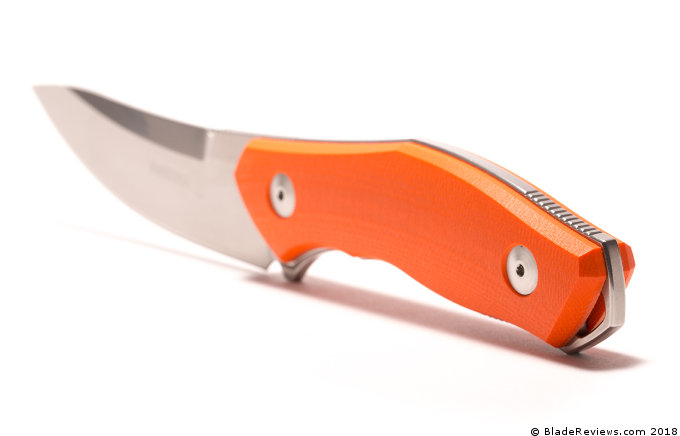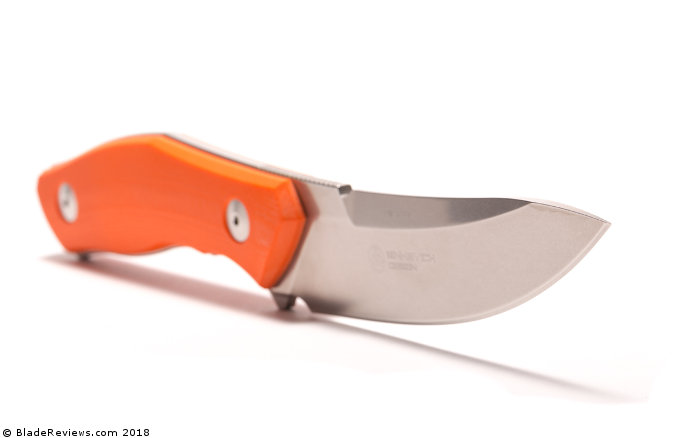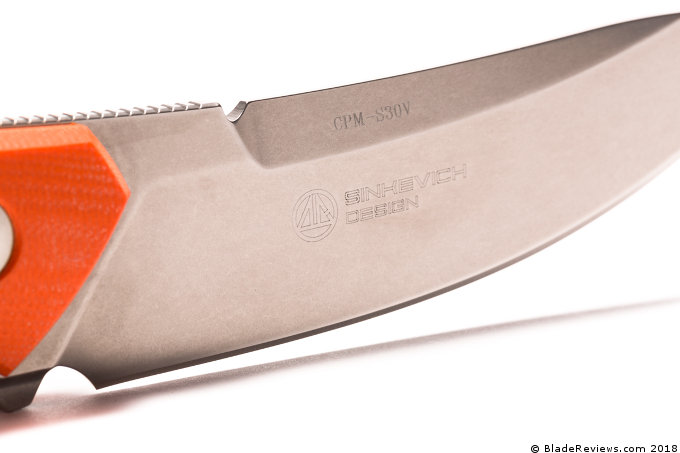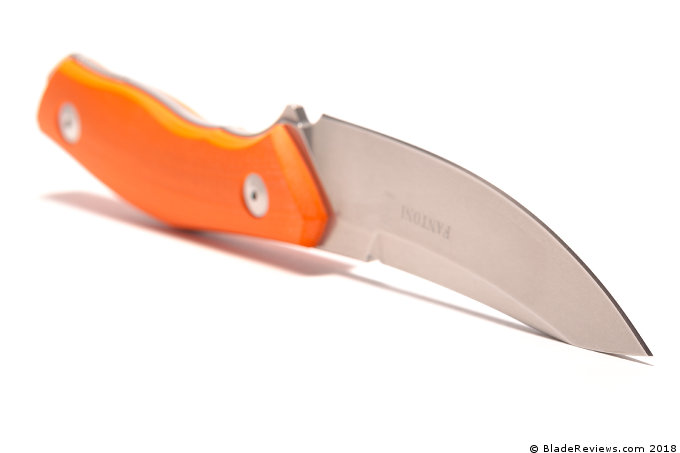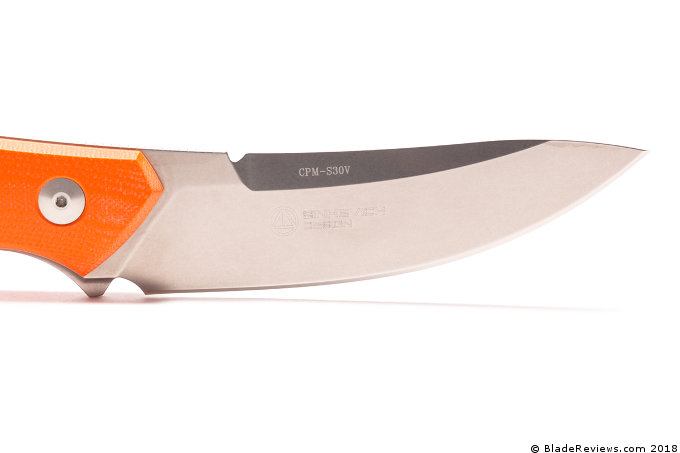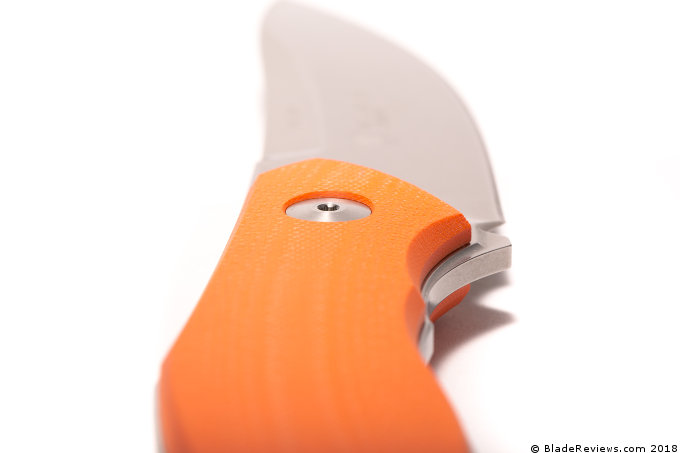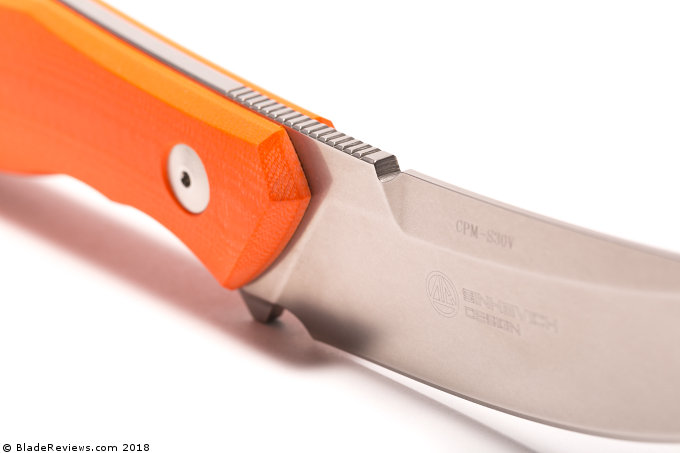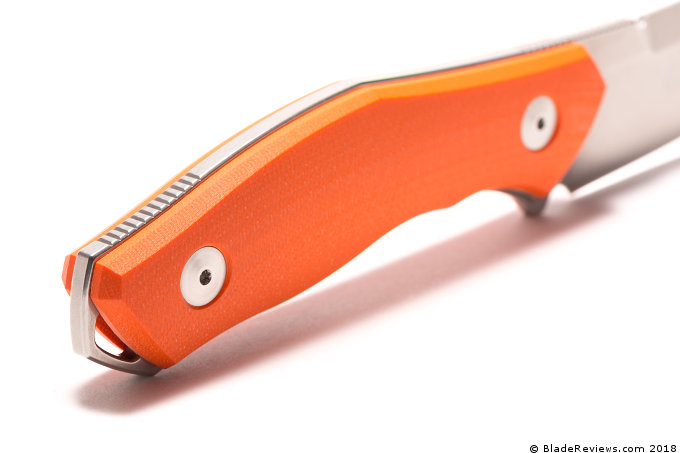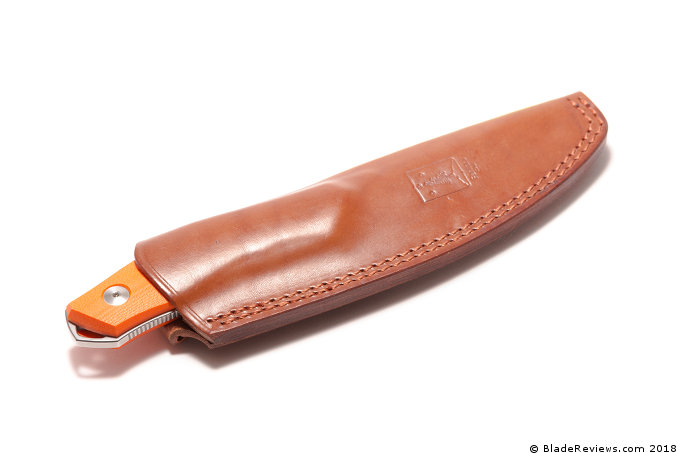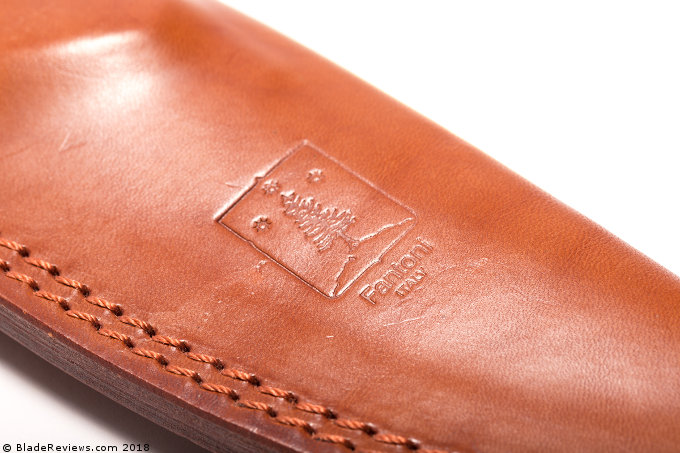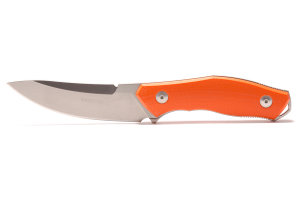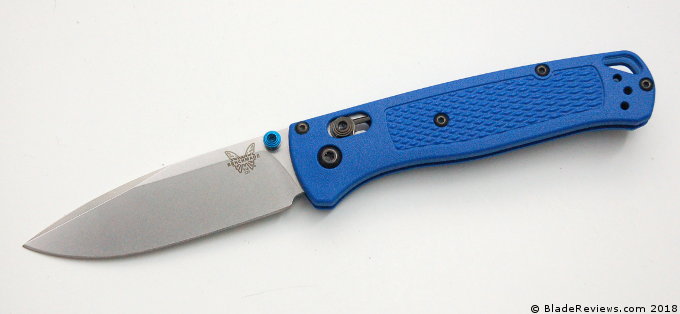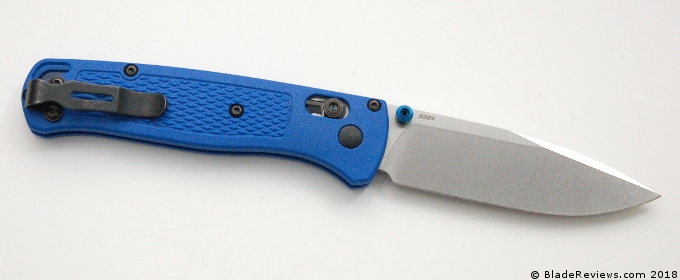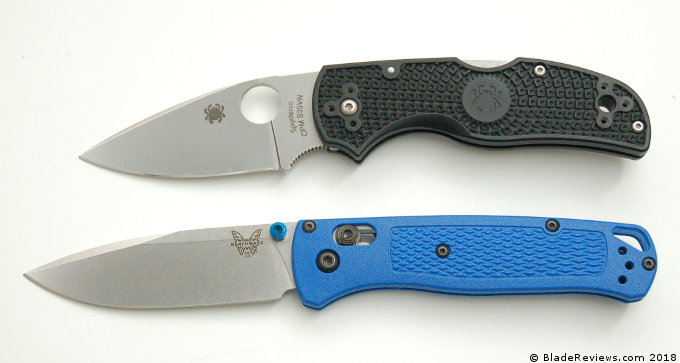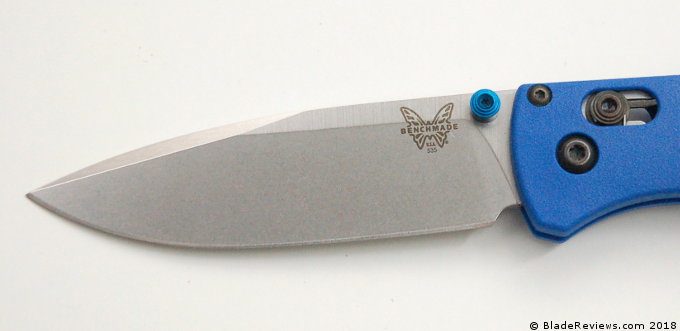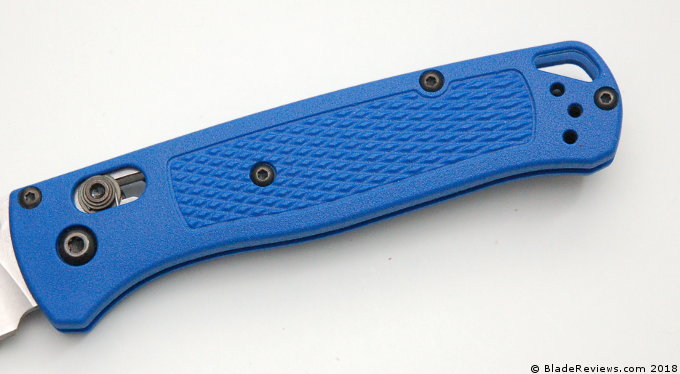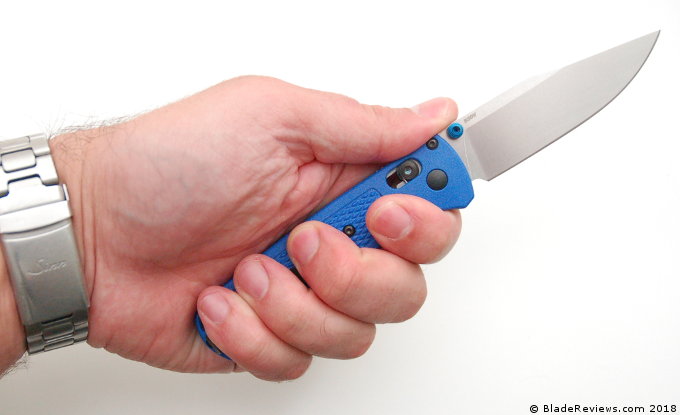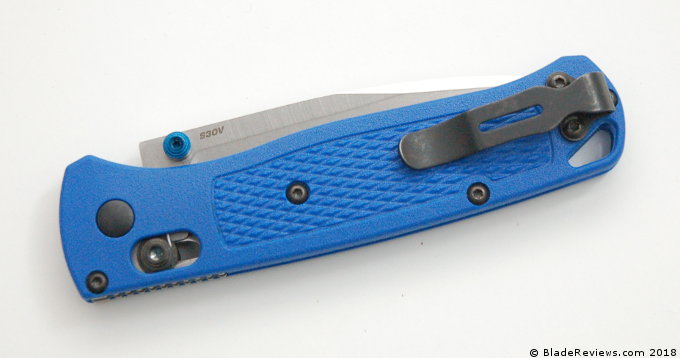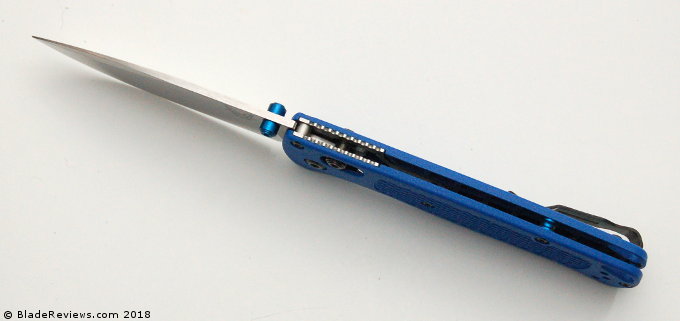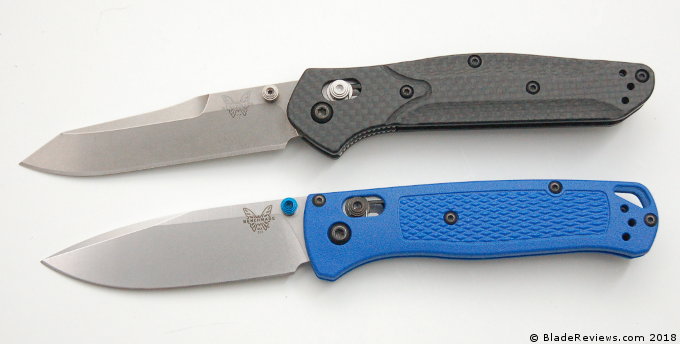The Gerber 06 Auto has always struck me as a stand out piece for Gerber. A well worn trope in knife reviewing is to bag on Gerber for their decline from an American standard to a mass market, Wal-Mart oriented, overseas produced stuffed shirt of a brand.
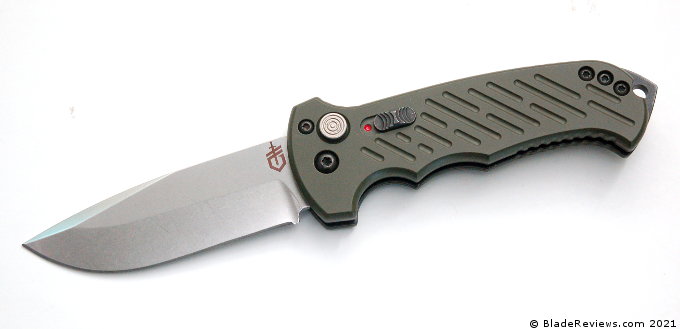
Buy the Gerber 06 Auto at BladeHQ
The poster child for that era of corner cutting was their plastic handled Bear Gryles Parang that would break in half if you tried to use it. I’m not sure you could even saber open a bottle of Dom with it on the hotel pool deck, much to Bear’s chagrin. If there ever was a rock bottom for Gerber, that was it.
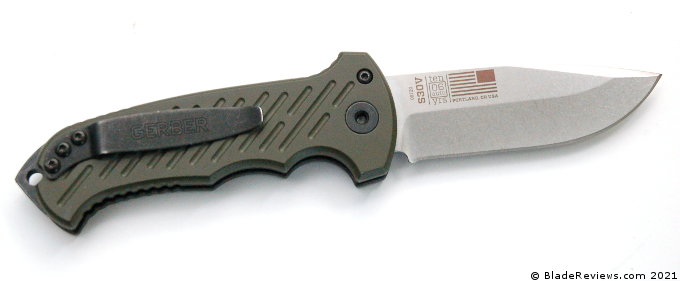
The 06 Auto is a standout for the brand because it is USA made piece geared towards military and law enforcement instead of mall ninjas and glampers. It’s an automatic knife, so federal law forced Gerber’s corporate overlords to produce the 06 in the USA. The bean counters were pissed when they realized this, and groused about the diminished margins. But enthusiasts have referred to the USA made 06 as a “happy accident”, because the resulting knife was not an orange plastic encased turd best known for its propensity to break in half. Imagine that!
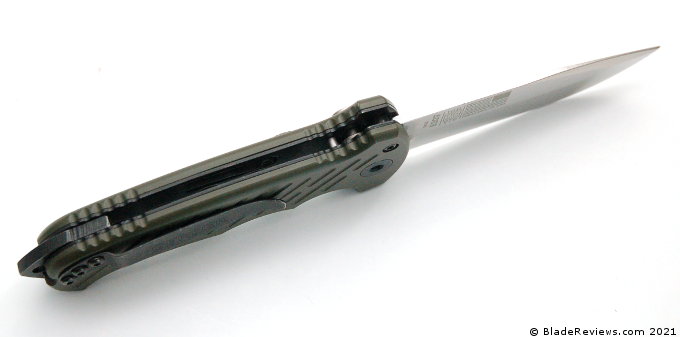
In the past few years Geber has attempted a turn around. Knives like the Fastball have shown the company is committed to making high quality blades again, but the 06 has been around for 10 years. In fact, the 06 I have here happens to be the 10 Year Anniversary variant with an OD green handle. It’s high time we check this modern classic out.
General Dimensions and Blade Details
The 06 Auto has an overall length of 8.625″, a 3.625″ blade, weighs 7.14 ounces and is made in the good ole USA. This is a full size knife with a similar footprint to my Strider SnG or Spyderco Paramilitary 2, but it’s about twice the weight thanks to a thick blade, full steel liners under aluminum handles, and a chunky steel backspacer. It’s not my top choice for an urban EDC knife, but if you are looking for a heavy duty piece this 06 feels like it can be used to bust through cinder blocks.
Here is a size comparison with a Spyderco Delica and an Endura. All in green!
The blade is a handsome traditional drop point, with a saber flat grind and a long swedge. The blade of my 10th anniversary edition has been given a simple stonewashed finish, but generally the 06 comes with a flat black blade coating. The grinds are clean and even and the edge has been neatly applied, the last 1/8th of an inch at the heel is unsharpened for some reason. I’m not a fan of that as I find material can get hung up on the unsharpened portion. I suppose that could be ground out, but would prefer to see the edge completely sharp all the way to the heel straight out of the box.
Gerber runs S30V steel on their O6s these days. I have no real issue with S30V. It’s a fine steel that gets the job done, although these days there are more exotic steels available. Depending on the heat treat S30V can be stubborn to sharpen. I found that this 06 is easy enough to touch up on my Spyderco Goldenstone, so that’s good. No issues with rust or corrosion so far.
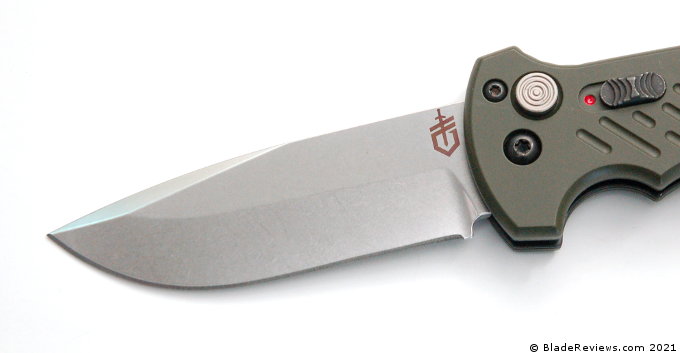
I’ve used this 06 a bit. It doesn’t leave the house much, as I prefer to carry smaller lighter knives when I’m on the go, but I’ve carried it around the house and neighborhood, and used it on many cardboard boxes. It’s an effective box cutter, tracking smooth cuts through cardboard and other packing materials. It also whittles well, peeling off long thin strips of wood and bark. It’s also a stout blade that should hold up well in harder use cases. I think it would be a good choice as folding camp knife.
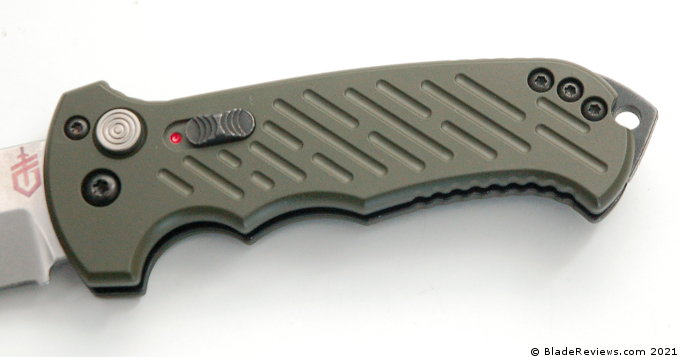
Handle, Ergonomics, and Pocket Clip
As I mentioned before, this knife comes with hard anodized aluminum scales over full steel liners and a thick steel backspacer. All the hardware has been given a black oxidized finish. This Ten Year Anniversary edition comes with OD green handles. I find that to be fun and a nice change of pace from the blacked out regular edition. Some of the finish is a little crude, most notably the tool marks on the backspacer, but the parts all fit together nicely. It’s a solid and well made handle.
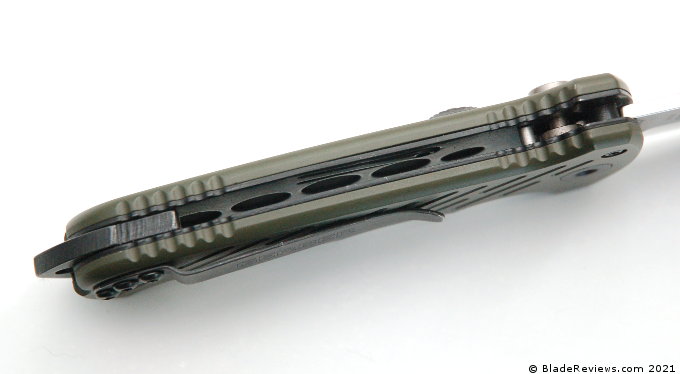
You can also see Gerber went through the trouble of skeletonizing the steel liners. The big honking backspacer also provides room for a lanyard hole and an “impact tool”. As far as impact tools go, this 06 Automatic means business. I would not want to get hit with this thing.
The ergonomics of this knife are quite good. The handle is generous and can accommodate larger hands and gloved hands. The anodized handles offer a little texture without being abrasive. There is some millwork in the handle for extra traction, but it seems that the 06 benefits the most from its simple and large handle shape. The knife is a little pommel heavy, and I find the most balanced grip is when I am choking back on the handle. However if you decide to choke up, the flared handle shape prevents your fingers from slipping forward. All in all this is a comfortable handle that should work well for most people.
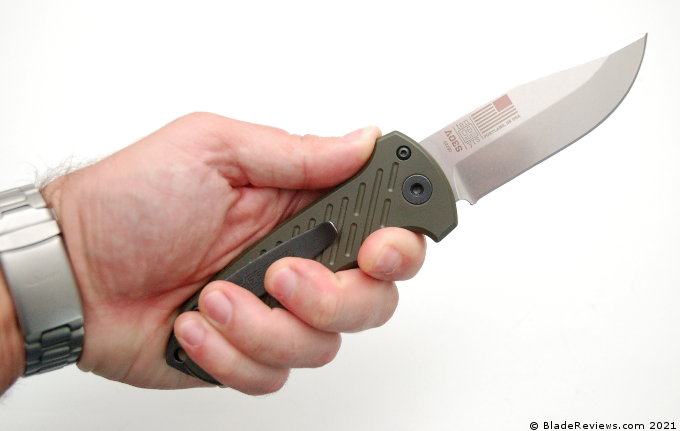
The pocket clip is large, and doesn’t provide for particularly deep carry. A good inch or so sticks out, which makes the knife easy to retrieve, but not super discreet. The pocket clip is secure with good spring retention. That is essential for a heavy knife like this.
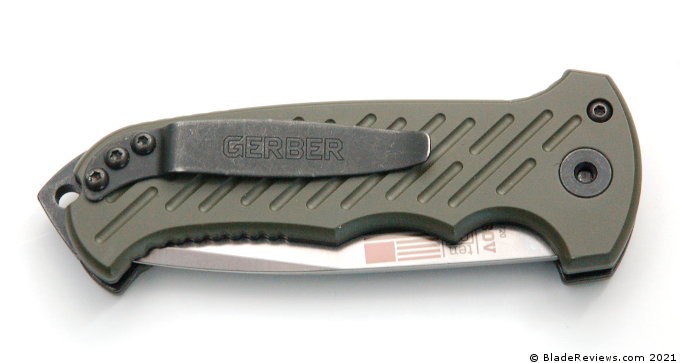
Here is your in the pocket shot:
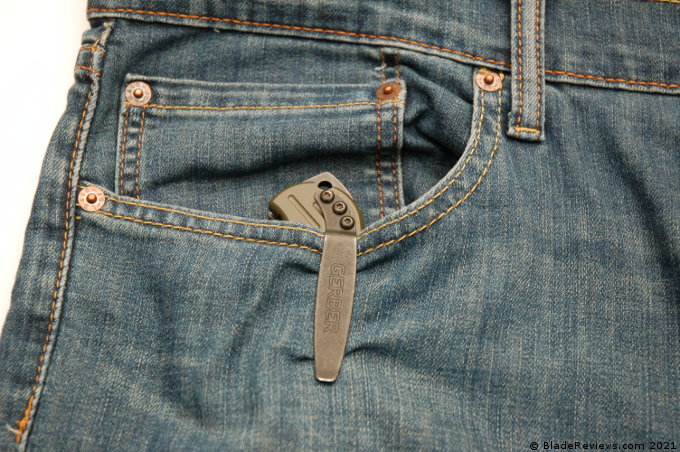
In practice I found the 06 to be a large and somewhat cumbersome knife to carry. If you are used to a heavy load out then the 06 is just another day at the office, but if you regularly carry a Dragonfly 2 or Mini Bugout like I do, then the 06 will take some getting used to. No surprise there, the knife is over 7 ounces.
Deployment and Lockup
Now for the fun part. As you know, the Gerber 06 is a push button automatic. The coil spring inside the handle is strong and snappy. It has no problem propelling the blade out. Gerber has also included a large safety button, or safety slide, that will lock the blade open or closed. Most safetys are fiddly and detract from the knife. The safety on the 06 actually enhances the experience. It’s surprisingly satisfying to use. It’s large and takes a purposeful amount of force to manipulate. I have yet to accidentally manipulate the safety. I don’t mind it at all on this knife.
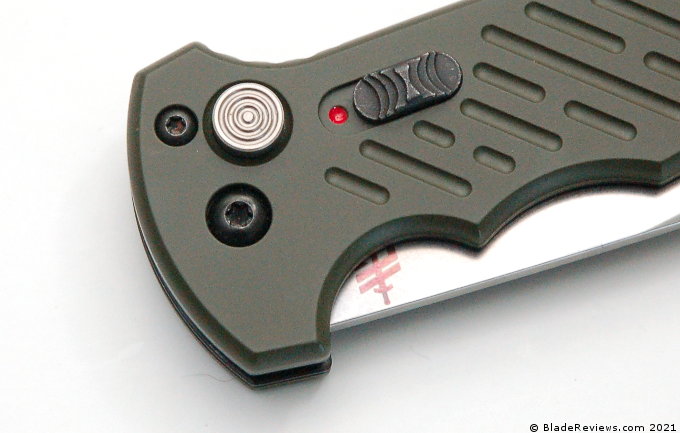
For lockup the 06 comes equipped with a button lock. This is a robust locking mechanism, and the safety slide allows you to lock the knife open if you choose. I like button locks in generally, and think the button lock here is pretty good. The blade is secure although there is a small amount of side to side play. No up and down play. When it’s time to disengage the lock, an appropriate amount of force is required. There is no stickiness in the lock. It’s good. No complaints here.
Here is a parting size comparison with my Strider SnG. I still enjoy this knife, and imagine it’s a collectible at this point. I thought it would make for a cool size comparison.
Blade centering is good on my knife. I’d say it’s off by a hair, but is still good enough for government work.
Gerber 06 Auto Review – Final Thoughts
The 06 Auto has been on my radar for as long as it has been in production. It has that universal cool, and is a strong departure from Gerber’s standard stuff. It’s handsome, rugged, and overbuilt. Who wouldn’t want one?
Well, an argument against the 06 is it’s a heavy duty tool. If you are a normal person, you could carry one for the novelty, but I think you will find that it’s overkill for most EDC use cases. Certainly if you are in law enforcement, military, or have a reason to carry a heavy duty piece like this, then the 06 is a great choice. But if your typical carry is an ultralight EDC knife, then the 06 Auto will get old fast.
With those caveats aside I can recommend the 06 Auto. It’s a robust knife and it shows what Gerber is capable of if they put their minds to it. It’s a quality piece, and I’d love to see them riff on this design and offer lighter and maybe even non-automatic variants. More “happy accidents” please, and less orange plastic.

Gerber 06 Auto – From $169.00
From: BladeHQ
Editor: I recommend purchasing the Gerber 06 Auto at BladeHQ. Thank you for reading.
